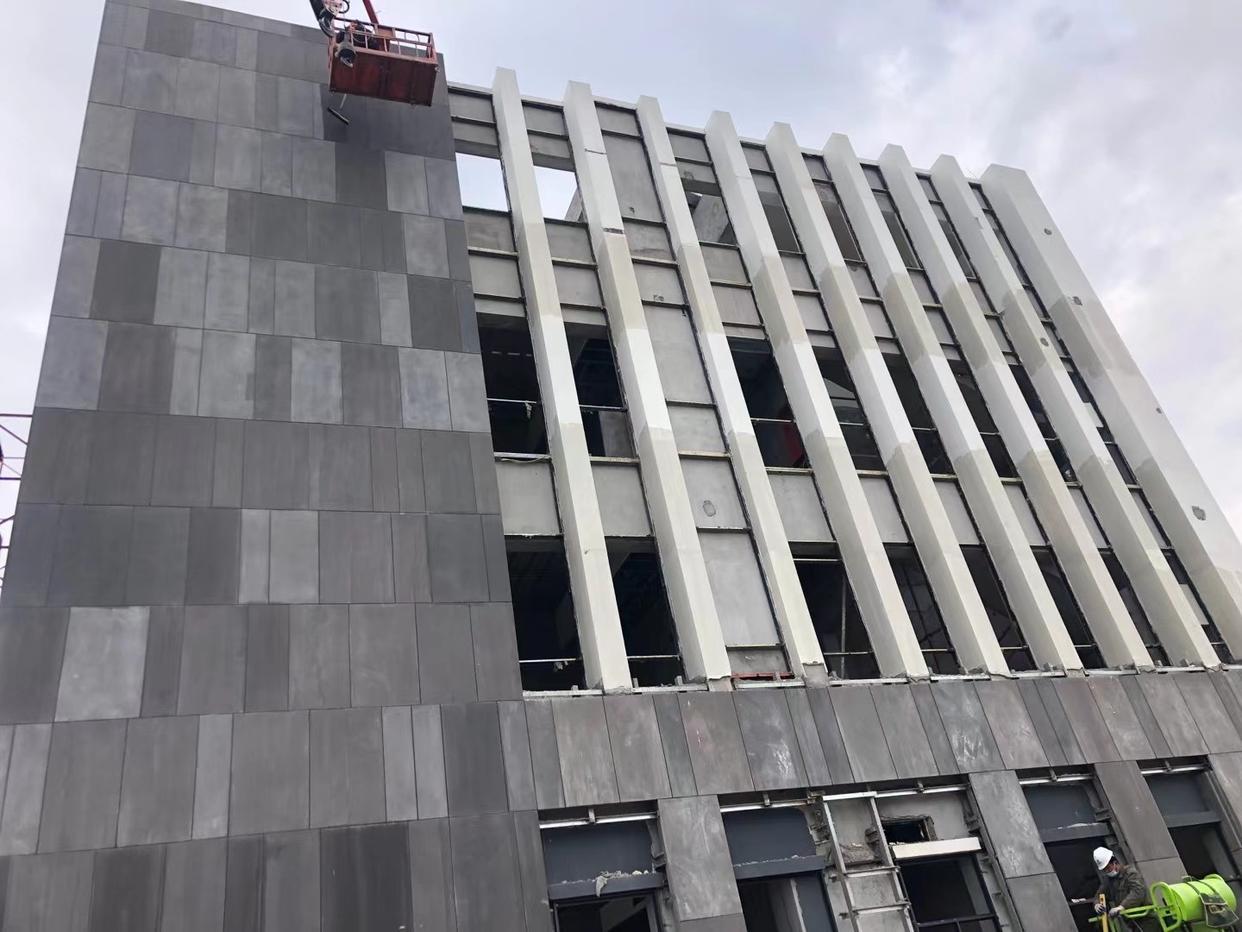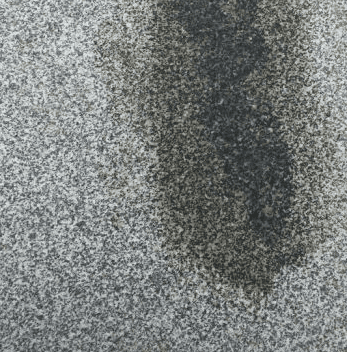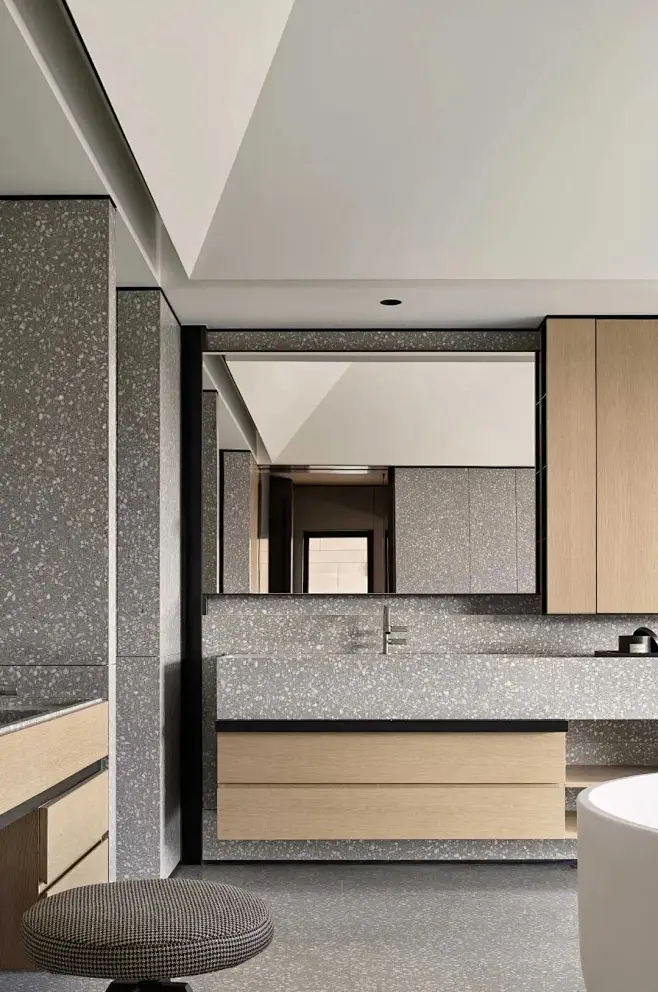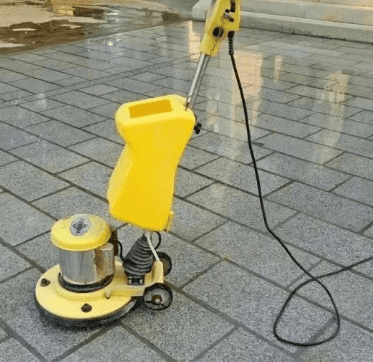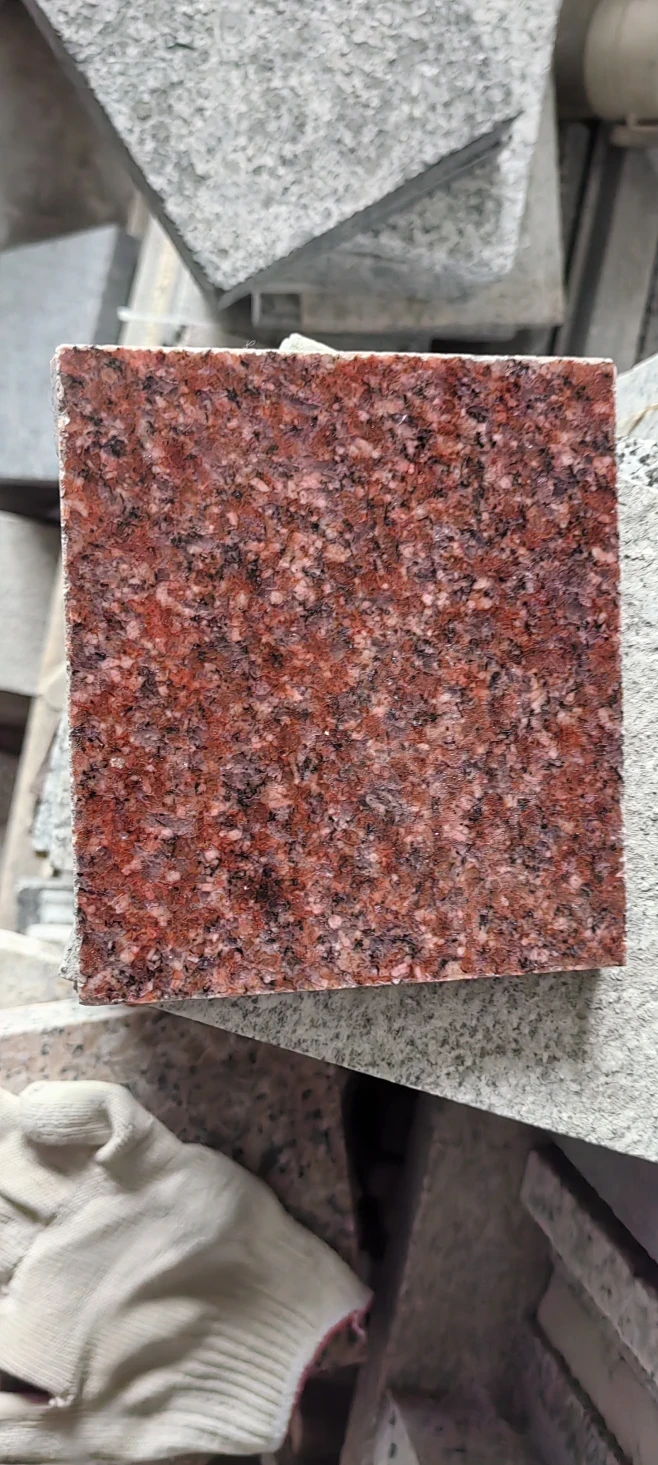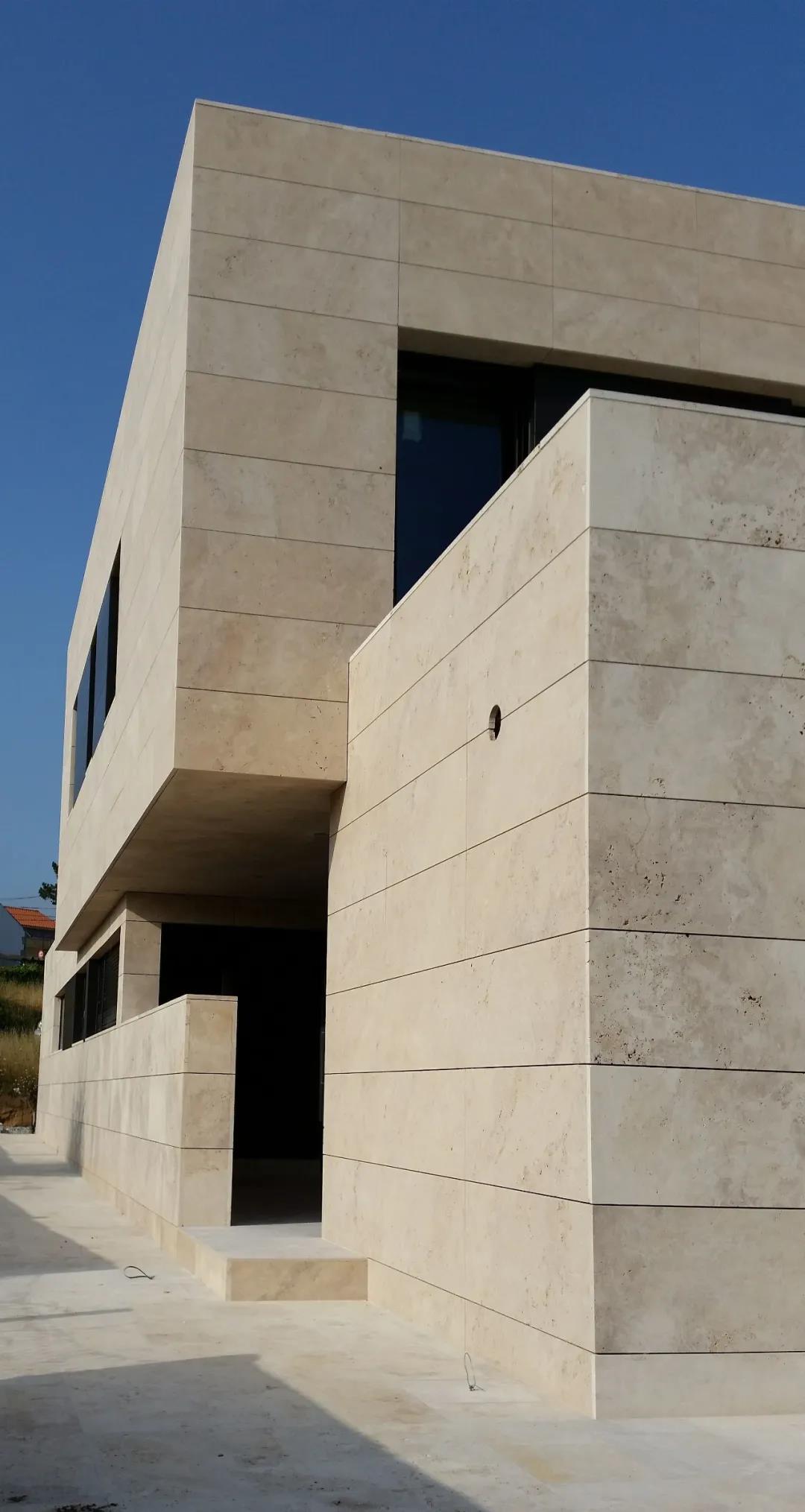Daily Maintenance of Granite Stone
Yuki
In recent years, with the continuous improvement of stone mining and processing technologies, granite has accounted for a large proportion of stone usage. Moreover, granite is hard, wear-resistant, with uniform patterns and bright luster, and has good weather resistance, making it the best choice for outdoor decorative materials. However, due to its crystalline structure, granite has a rich network of pores and fissures, a relatively high water absorption rate, and is highly susceptible to soiling.
Especially when the surface of granite is treated with non-polishing processes to create rough surfaces, such as flamed and bush-hammered finishes, the micropores on these stone surfaces are open. During construction, substances like paint, cement slurry, and other liquids that splash onto the surface can easily form deep or strongly adhering stains.
Dust, grease, juice, and colored stains from daily life are also easily absorbed and permeate into the stone. Additionally, the mineral composition of granite is complex, and iron components in some light-colored granites can rust when exposed to moisture, resulting in yellow patches on the stone's surface.
So, how should we maintain granite on a daily basis?
Daily Maintenance of Granite
The environment in which stone is used is also the living environment for people, thus it is inevitably subjected to various pollutants from daily work and life, such as juice, cola, colored stains, grease, hand dirt, and dust. If these common pollutants are not removed in time, they can leave stubborn stains on the stone over time, and some may even damage the stone's surface luster. Therefore, it is necessary to regularly clean or wash the stone that is in these polluted environments, and in some special occasions, it is necessary to assign personnel to frequently clean or maintain the stone daily.
If you find wet liquid stains on the ground or walls, promptly use paper or cotton cloth with good water absorption to wipe and absorb them. If it is a water-based stain, wipe it again with a cotton cloth dipped in water. If it is an oil-based stain, quickly wipe it clean with absorbent paper and cotton cloth. If these stains leave permeable marks after wiping, then use the appropriate cleaner based on the nature or composition of the stain.
For the maintenance of large areas of stone flooring, tools such as handle mop machines, water absorbers, grinding brushes, dust push brooms, mops, and towels can be considered. Using a mop machine can greatly improve work efficiency and cleaning effectiveness, and using a water absorber can promptly clean up the dirty water on the cleaned floor.
Of course, no matter what, water is the best and most important cleaning material. If necessary, adding some cleaning agents to the water can improve the cleaning quality. However, it is important to note that when using dust push brooms, mops, and towels, avoid using them when they are wet or have a high humidity.
This is because, on the one hand, stone in contact with too much water is prone to some diseases; on the other hand, the ground that has just been wiped with water is relatively slippery, and footprints are easily left by passers-by; moreover, the ground that has been wiped with water may look clean at the moment, but when the water dries, the dust remains on the surface of the stone, which is also the main reason why some floors always look gray after being wiped with water.
Therefore, for the daily cleaning of stone floors, it is necessary to combine pushing and wiping. Pushing means to dry push, or to make the cotton dust push a little damp, or to spray a little dust-attracting liquid on the dust push, so as to clean the dust and sand on the ground in time. Wiping means to use mops or towels to wipe the water marks and liquid stains on the ground in time.
Construction Maintenance of Granite
Construction cleaning is based on the complete expression of the decorative effect of the stone during the stone decoration construction, which is of great significance for ensuring the construction quality and reflecting the decorative effect. It is usually carried out during the stone installation process or after the overall completion.
However, most constructors only carry out simple cleaning of construction waste and stripping of dust attached to the stone surface after completion. For some glue marks, paint, grease, residual cement, and other difficult-to-remove pollution formed during construction, they either do not clean them or use some strong acid and strong alkali cleaning, causing irreparable consequences. Construction cleaning should combine physical methods with chemical methods.
If the construction site is divided into walls and floors, the cleaning work should start from the walls. First, use tools such as scrapers and rags to strip the residual cement slurry, paint, glue marks, paint, and floating dust on the walls, and then use various corresponding cleaners to clean the remaining residual dirt in turn, such as using rust remover to remove rust stains on the stone, and using degreasing and paint remover to clean paint and pigment pollution on the stone. Finally, use clean water or add some maintenance agents to the clean water and wipe the entire stone wall with a rag one or two times.
The construction cleaning of the ground is basically the same as that of the wall, also from rough to fine. Finally, in order to improve work efficiency and cleaning effect, you can use washing machines to clean the ground as a whole, and use water absorbers to clean up the dirty water left on the ground in time during the cleaning process.
Special Stain Cleaning
Granite surfaces are subjected to some common pollution and stains formed from people's daily life and work, such as grease, dust accumulation, and unclear dirt. For common grease, you can use some alkaline or weak alkaline or neutral cleaning agents containing surfactant formulas to achieve the ideal effect. For dust accumulation and some unclear dirt, you can use some weak acidic cleaning materials containing surfactant formulas for cleaning. When cleaning, first pour the cleaning agent on the working surface, brush it open with a slightly harder brush, soak for about ten minutes, then scrub back and forth with the brush, then clean away these dirty liquids, and then wipe with clean water many times. Of course, you can repeat the previous cleaning process according to the situation. Granite occasionally has rust spots. There are usually two types of rust spots, one is formed by the pollution of foreign rust marks, such as the rust marks flowing down from the iron advertisement frame on the granite wall eroded by rainwater; the other is caused by the further oxidation and diffusion of iron compounds inside the stone when the granite is affected by water. For the former, you can use some weak acidic rust removers to achieve ideal results. For the latter, since it comes from the stone itself, if you just simply remove the rust spots on the surface of the stone, then the stone will appear rust spots again in the future in humid conditions.
For this situation, on the one hand, you should choose some better composite formula rust removers, which can convert iron oxides into inert ingredients while removing rust spots, to prevent future rusting. At the same time, after the rust spots are removed, the stone should be waterproofed in time, because too much water is the main cause of stone rusting.
If paint or pigment drops on the granite, in addition to adhering to the surface, some also penetrate into the shallow layer of the stone. At this time, you should use a thin blade to strip the surface pollution layer of the stone before cleaning, and then use the selected cleaning agent for cleaning.
The choice of cleaning agent, if you have had the same or similar cleaning experience in the past, you can directly choose and use the corresponding cleaning agent according to your experience. Otherwise, you have to try to make the corresponding selection and trial, but remember not to abuse and misuse. Generally speaking, most paints and organic pigments are more sensitive to solvent-based cleaning agents, and you can choose some solvent-based cleaning agents with a longer evaporation time or that can be dissolved in water.
When using, you can wipe or soak according to the situation. For removing paint or pigment on the wall, since liquid cleaning agents are easy to flow on the facade, they should be removed by pasting or using some paste-like cleaning agents. But no matter what kind of cleaning agent or method is used, it is best to try on a small area first, and then use it on a large scale after determining the effect and dosage.
